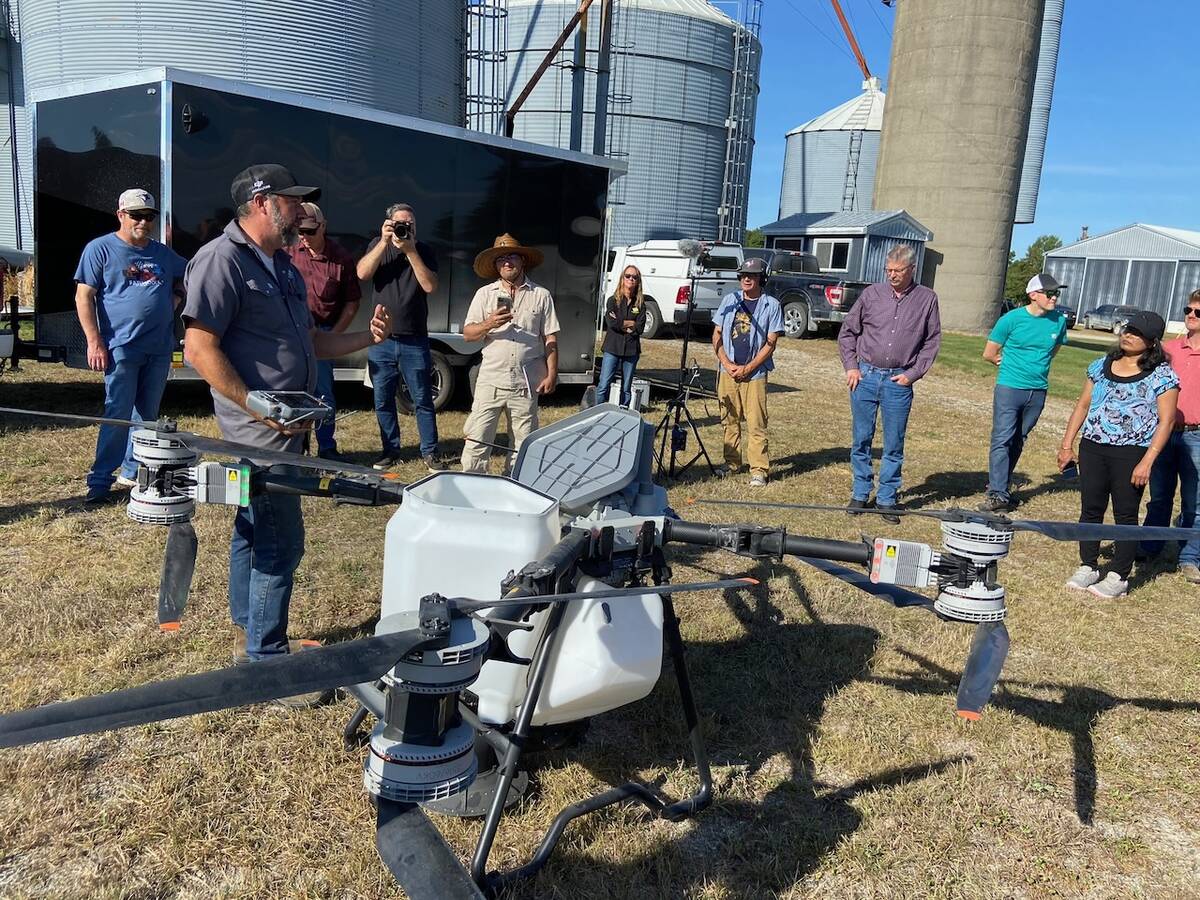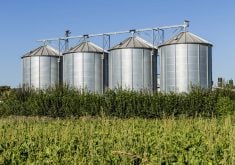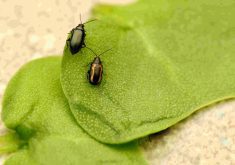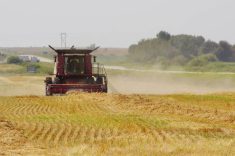The suffering from last year’s wet growing season isn’t over yet – farmers will have to deal with a bumper crop of Roundup Ready volunteer canola.
“Volunteer glyphosate (resistant) canola, this is going to be a major weed again this year,” said Nasir Shaikh, Manitoba Agr icul ture, Food and Rural Initiatives’ weed specialist. “I’ve seen fields this year that are almost carpet covered with volunteer canola. This is going to be almost the No. 1 weed this year.”
Read Also

Drones jumpstart cover crop planting
Drones are a tool that can help farmers with cover crop planting in still-growing corn and soybeans.
Volunteer canola is one of the first weeds out of the ground, and there will be lots of them because so many canola seed pods shattered during last year’s harvest, which was delayed by wet weather, he noted.
Farmers have a few herbicide options that can be tank mixed with glyphosate in a pre-plant burn-off, but it depends on what they’re seeding. If it’s canola, the only registered option that will control Roundup Ready volunteer canola is ClearStart, said Kristen Phillips, the Canola Council of Canada’s Manitoba agronomy specialist. The council warns that while it’s tempting to use MCPA or 2,4- D, neither is registered. Applying them could disrupt Canada’s canola markets.
In addition, MCPA and 2,4-D residues are known to damage newly emerging canola seedlings.
“The whole point of controlling volunteer canola and early weeds is to give the canola crop a head start,” the council says in Canola Watch, its email newsletter. “But if unregistered herbicides are setting back the canola crop and thinning the stand, the whole purpose of a pre-seed burn-off is compromised.”
CleanStart is a nonselective herbicide that combines glyphosate with carfentrazone. It must be applied when volunteer canola is actively growing and less than 10 cm tall or in the one-to three-leaf stage.
Excess moisture last fall and this spring will cause other weed problems, Shaikh said, including:
Perennials – curly dock, thistle of all kinds, dandelion, foxtail barley, barnyard grass and, in pastures, leafy spurge and dandelion.
Biennial – biennial wormwood, stork’s bill.
Winter annual – flix weed, stinkweed, shepherd’s purse.
Annuals – wild oats, Canada fleabane, prickly lettuce, cleavers.
“The good news is the kochia will be down because of the excess moisture condition and also, because of the cool season, there was less seed set last year,” Shaikh said.
Save for glyphosateresistant weeds, glyphosate is still one of the best options for controlling weeds before seeding, Shaikh said.
As weeds gets larger the rate (dose) of glyphosate applied needs to increase to ensure control, he said. For example, based on the 360-grams-per-litre formulation of glyphosate, a rate of 0.3 litres per acre will control wild oats under three inches tall. The rate should be boosted to 0.4 litres for bigger wild oats.
To control perennials, especially large dandelions or thistles, rates can be increased to two litres per acre.
———
“Ifunregisteredherbicidesaresetting backthecanolacropandthinningthe stand,thewholepurposeofapre-seed burn-offiscompromised.”
– CANOLA COUNCIL OF CANADA















